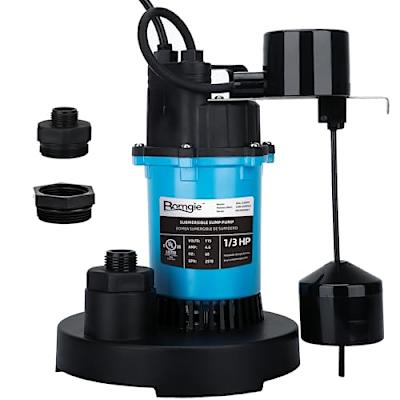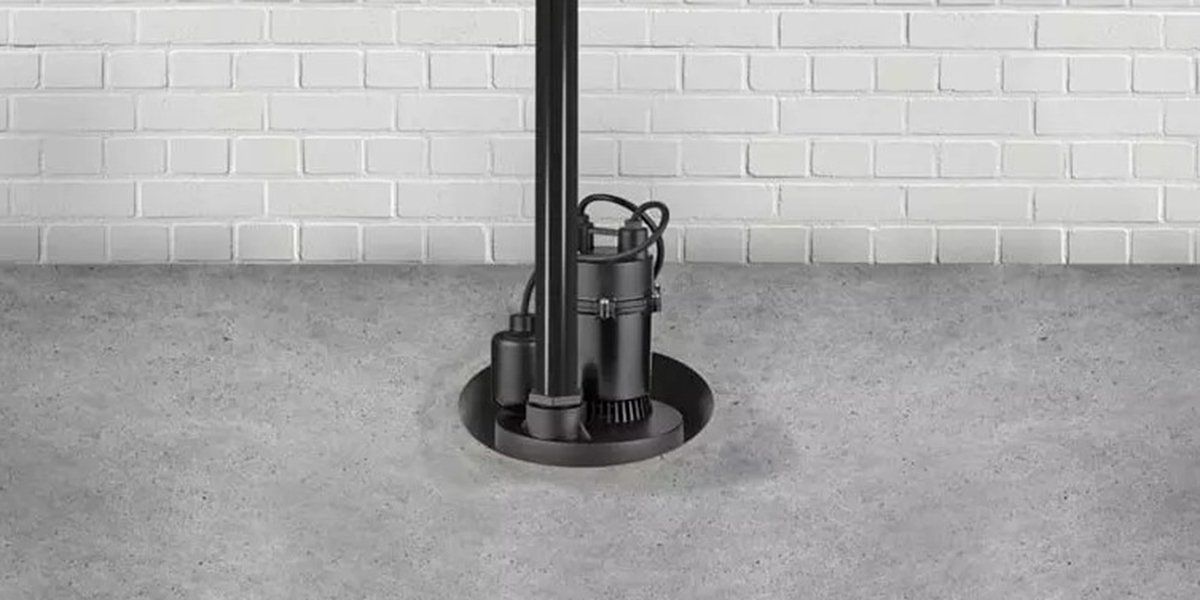Just how do you feel in relation to Cleaning & Maintenance Tips for Your Home's Sump Pump?

Sump pumps are vital components in many homes, especially in locations prone to flooding or extreme moisture. They help avoid water damages by efficiently getting rid of excess water from cellars or crawl spaces. Nevertheless, like any other appliance, sump pumps need normal maintenance to ensure they function successfully when needed the most. Cleansing your sump pump is a crucial part of its upkeep, and comprehending just how to do it correctly can conserve you from expensive repairs and potential calamities.
Intro
Preserving a clean sump pump is essential for its appropriate functioning and long life. Neglecting this essential job can bring about obstructions, malfunctions, and ultimately, water damage to your property. As a result, learning how to clean a sump pump is vital for property owners that count on these devices to maintain their cellars dry and safeguarded.
Indications of a Dirty Sump Pump
Recognizing when your sump pump needs cleansing is important for preventing potential malfunctions. Some usual signs that suggest an unclean sump pump consist of odd sounds throughout procedure, lowered water circulation, and noticeable particles in the pit. If you notice any one of these symptoms, it's important to clean your sump pump without delay to avoid any type of additional issues.
Planning for Cleaning
Before you start cleansing your sump pump, it's vital to take some safety precautions. Beginning by shutting down the power to the pump to stay clear of any electric mishaps. In addition, wear appropriate protective equipment, such as handwear covers and goggles, to secure yourself from dirt, particles, and potential microorganisms.
Understanding the Sump Pump
Prior to diving right into the cleaning procedure, it's necessary to have a fundamental understanding of how a sump pump functions. Typically mounted in a pit or basin listed below the cellar flooring, a sump pump consists of several key components, including a pump, a float button, and a discharge pipe. When water gathers in the pit, the float switch turns on the pump, which after that pumps the water out through the discharge pipe, far from the building's foundation.
Step-by-step Guide to Cleaning a Sump Pump
Shutting down the Power
Begin by disconnecting the power supply to the sump pump to stop any type of crashes while cleansing.
Looking For Appropriate Performance
Prior to re-installing the pump, do a quick examination to make sure that the float button turns on the pump properly. Put some water into the sump pit and observe the pump's procedure. If every little thing is functioning appropriately, you can reconstruct the pump and reconnect the power supply.
Eliminating Particles and Dirt
Utilize a bucket or a scoop to remove any kind of noticeable particles, dirt, or sediment from the sump pit. Dispose of the particles appropriately to prevent it from blocking the pump or the discharge pipeline.
Cleansing the Pump and Float Switch Over
As soon as the pit is clear of debris, carefully remove the pump from the pit. Inspect the pump and the float switch for any indications of damages or wear. Make use of a soft brush or fabric to clean the surfaces and eliminate any kind of accumulated crud.
Flushing the System
After cleansing the pump and float button, purge the sump pit with clean water to eliminate any kind of staying dirt or sediment. This will help ensure that the pump operates smoothly and successfully.
Maintenance Tips to Maintain Your Sump Pump Clean
Along with routine cleaning, there are several upkeep pointers you can comply with to maintain your sump pump in optimal problem:
Verdict
Cleaning your sump pump is a vital aspect of its maintenance and ensures that it runs properly when you require it one of the most. By complying with the steps outlined in this overview and integrating regular upkeep right into your routine, you can expand the life-span of your sump pump and safeguard your home from water damage.
6 STEPS ON HOW TO CLEAN A SUMP PUMP PROPERLY
UNDERSTANDING SUMP PUMPS
Your sump pump plays a crucial role in protecting your home by managing and removing excess water. It primarily functions as a “shield”, guarding your basement against the damaging effects of water accumulation. The pump is housed in a sump pit in the lowest part of your basement, and its job is to pump out any water that collects there.
During heavy rainfalls or when snow melts rapidly, water can infiltrate your basement, posing potential risks like flooding, structural damage, and harmful mold growth. Here, the sump pump springs into action, pumping out the intruding water and directing it away from your home.
SAFETY FIRST
Before cleaning, remember to prioritize safety. Disconnect the sump pump from the power source to prevent any accidental electric shocks. Also, wear sturdy gloves to protect your hands from any sharp or dirty components within the pump.
REMOVE THE SUMP PUMP
After ensuring your safety, the next step is to remove the sump pump from its pit. Doing this might require careful maneuvering as you don’t want to damage any pump components. Once removed, clean the sump pit to remove any accumulated debris or sludge.
INSPECT THE PUMP
Inspect the pump for any visible signs of wear or damage. Check the power cord, float switch, and impeller housing. If any components look worn out or damaged, consider replacing them to ensure optimal performance.
CLEAN THE PUMP
Thoroughly clean the pump with warm, soapy water. Make sure to rid it of any dirt, gravel, or other debris that might impede its performance. You can use a toothbrush to clean the small, hard-to-reach parts of the pump.
REINSTALL THE SUMP PUMP
Reinstall the pump into the sump pit Make sure it’s positioned correctly to remove the water effectively Once it’s back in place, reconnect it to the power source TEST THE PUMP
Finally, pour some water into the pit to ensure the pump works correctly. It should start automatically and begin pumping out the water; if it doesn’t, check the power source and the positioning of the pump.
Remember, while cleaning your sump pump is an essential part of home maintenance, hiring a professional plumber for a thorough inspection and cleaning at least once a year is also important. This will ensure that your pump is in optimal condition, ready to protect your home from potential water damage.
BEST PRACTICES FOR CLEANING SUMP PUMP DISCHARGE PIPES
Regular Inspection: Regularly inspect your discharge pipes, especially during heavy rainfall or snowmelt periods. Look for any signs of blockage or damage. Early detection of problems can prevent serious issues down the line. Periodic Cleaning: Over time, sediment and debris can accumulate in the discharge pipes, impeding the flow of water. Regular cleaning helps keep the pipes clear and functioning efficiently. You can use a high-pressure water jet to effectively clean the pipes. Insulation During Winter: In colder climates, discharge pipes can freeze, blocking the outflow of water. Protect your discharge pipes from freezing temperatures by insulating them with foam pipe insulation. This will ensure the sump pump can continue to discharge water even in freezing conditions. Proper Positioning: The discharge pipe should be positioned to direct water away from your home’s foundation. Improper positioning can lead to water seeping back into the basement. Ensure the pipe is long enough and angled correctly. Installation of a Check Valve: A check valve prevents water from flowing back into your sump pit after the pump has pushed it out. Installing a check valve helps maintain the efficiency of your sump pump and reduces the risk of flooding. Minimize Pipe Turns: Every curve or turn in the discharge pipe can decrease the efficiency of water flow. By minimizing turns and bends in your discharge pipe, you can increase the efficiency of your sump pump. https://www.fullspeedplumbing.com/how-to-clean-a-sump-pump-properly9999/

I'm certainly very drawn to Keep Your Sump Pump Clean, It'll Keep You Dry and I am assuming you enjoyed reading the new post. Those who enjoyed our article please do not forget to share it. I cherish reading our article about Cleaning & Maintenance Tips for Your Home's Sump Pump.
Go Deal Now